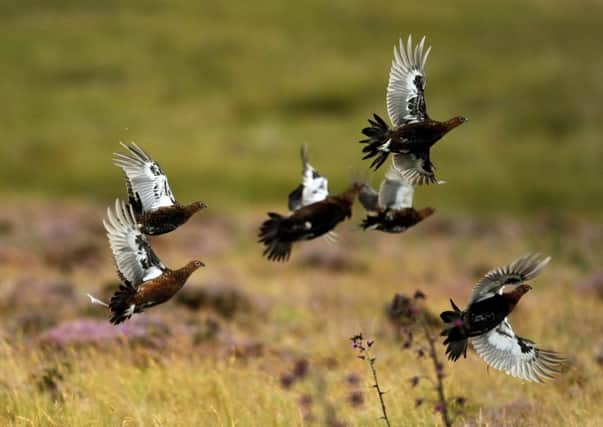‘Sporting rates’ could hurt people as well as wildlife


Land reform is firmly back on the political agenda. The Land Reform Scotland Bill is progressing through the Scottish Parliament and the rural affairs, environment and climate change committee is currently taking evidence.
On the surface you might think that who owns the land, and specifically rural Scotland, has little consequence in terms of environment and biodiversity. But there are measures in the bill that might have an impact on investment in the countryside, including lifting the business rates exemption for shooting which, if enacted without great care, could harm Scotland’s wildlife.
Advertisement
Hide AdAdvertisement
Hide AdLandowners are, typically, active land, habitat and wildlife managers, and sporting rates could easily become a disincentive to their delivery of many biodiversity benefits. These include enhancing habitats, species and habitat monitoring, managing disease and predators – much of this being undertaken by gamekeepers, wildlife rangers and farmers as a direct result of private investment.
Driven grouse shooting particularly is perceived as a land use where there is money to burn and therefore an easy target for tax. The assumption, wrongly, is that management for grouse shooting delivers little benefit. Low ground game management similarly is often perceived – again wrongly – to deliver little other than benefit for those who own either the ground or shooting rights.
The uplands, however, are not areas of wilderness managing themselves, and driven shooting, whilst ensuring people continue to live and work in the countryside, also supports a host of flora and fauna, and many public goods and services – recreational space, retention of peat bog for carbon storage and clean water, and iconic food including venison, grouse and heather honey.
Some 75 per cent of Britain’s heather moorland is in Scotland, and exists in its current state due to management. The economic alternatives are grass-dominated grazing or commercial conifers, neither of which benefit wildlife to anywhere near the same extent. There is also no doubting the cultural and aesthetic value of heather hill.
An estimated 950 sq km has been protected from forestry and grazing in the last 50 years through active management for grouse and other species that thrive there, including waders, curlew, lapwing, plover, black grouse and mountain hares, as well as countless invertebrates and rarer plant species.
On the low ground, those participating in conservation programmes for species such as grey partridge, one of our fastest declining bird species, deliver wider conservation benefits than those outside such initiatives – witness the success of the GWCT’s Partridge Count Scheme.
Game and conservation measures – including the use of field margins, grass strips, hedgerows and beetle banks – all contribute towards wider biodiversity and the success of species, as well as providing key ecosystem services like preventing soil erosion. Game shooting is the driver but the benefits are far greater.
Game management also provides some 2,640 full-time equivalent jobs and wages of around £30 million. Sporting income is important to local communities via hotels, shops and garages, often at times when other tourism income is not flowing.
Advertisement
Hide AdAdvertisement
Hide AdWe hope the return of sporting rates is managed so that it is not a disincentive for private owners who invest in the countryside and deliver far broader benefits. Nudges, whether carrots or sticks, need careful consideration if they are not to have unwanted consequences. Careful thought is required over whether sporting rates will in fact deliver the impact-neutral local tax that the Scottish Government anticipates, or will it drive valuable investment away?
Why add to the cost of management of species and habitats when, without private investment, there are limited public funds available through government to meet the shortfall? On the face of it, any measure that proposes wholesale increase of regulation and costs is unlikely to stimulate wildlife management or encourage wildlife revival. Should there be doubt then a full economic impact assessment is vital before any decision is made.
The return of sporting rates could so easily affect conservation detrimentally and the pursuit of a hastily sought political objective could quickly unravel into a host of unintended impacts.
In a country that derives such value from its sporting landscape, and whose wildlife and habitats are so central to its identity and global brand, we owe it to ourselves to proceed with caution. As any wizened fisherman or weathered stalker can attest, real results only come to those who know the ground and move with care.
• Adam Smith is director of the Game and Wildlife Conservation Trust in Scotland www.gwct.org.uk/scotland